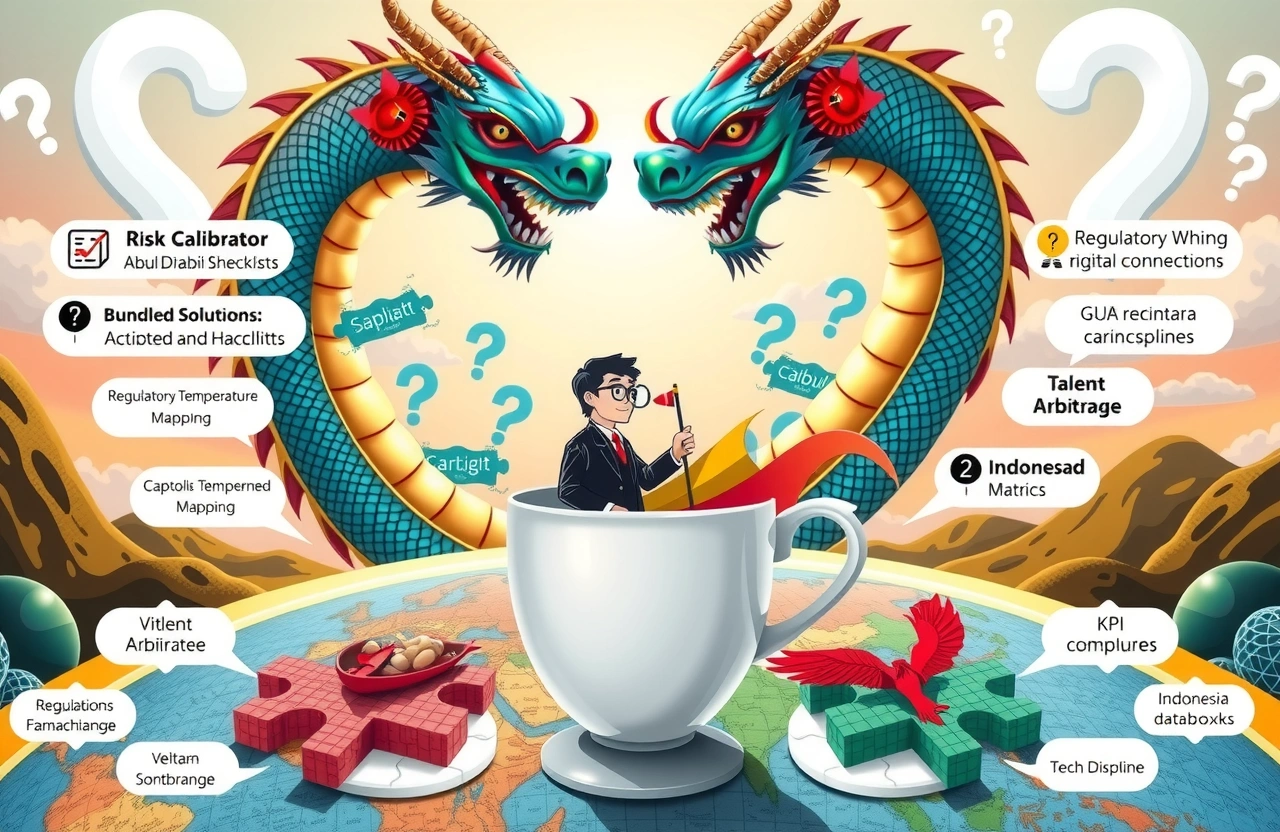Key insights:
– Precise expectation management separates successful global expansions from failures
– Chinese enterprises must move beyond simple exporting to integrated resource partnerships
– Bundled ‘all-in-one’ solutions minimize risk while maximizing overseas opportunities
– Aligning market selection with corporate DNA prevents costly strategic misfires
The Overlooked Foundation of Global Growth
As supply chains reconfigure and trade barriers evolve, Chinese enterprises stand at the most complex crossroads in modern globalization history. Zhang Zhang (张璋), BRICS Technology Transfer Center Head and Beijing International Technology Exchange Alliance executive, observes: “Nearly 80% of overseas failures originate not from operational errors, but expectation mismatches.” Through his work connecting Chinese biotech firms with UAE opportunities, Zhang developed counterintuitive frameworks for sustainable expansion.
Unlike conventional advice emphasizing market analysis, Zhang argues expectation calibration comes first: “Companies typically ask ‘where should we go?’ before answering ‘what opportunity essence can sustain us abroad?’. This gap explains why 63% of overseas ventures underdeliver.” His UAE packaged solution model – integrating capital access, listing pathways, and industrial parks – demonstrates how aligning expectations with strategic architecture reshapes outcomes.
Deconstructing Overseas Ambitions
Zhang identifies three expectation tiers governing offshore success. Most companies fixate on surface solutions without diagnosing foundational mismatches:
Transactional Illusions
Selling existing products abroad appears straightforward – until local compliance costs erase margins. Zhang recounts: “A Chengdu robotics firm lost $18M before recognizing Dubai’s mandatory localization required factory investments they’d never considered.” Core questions to surface true costs:
– Regulatory staging: What phased investments meet compliance milestones?
– Local profit thresholds: When does breakeven actually occur?
– Ecosystem dependencies: Which local partners become indispensable?
Strategic Integration Thresholds
– Avoid the “representation office trap” where minimal presence prevents meaningful market learning
– Calculate genuine resource interoperability costs
– Map complementary partnerships in prospective markets with tools like McKinsey’s Globalization Alignment Matrix
Blueprinting Bundled Opportunity Channels
Zhang’s UAE biotechnology project showcases practical expectation normalization. By packaging Abu Dhabi’s ADX listing access with Ras Al Khaimah industrial zones and Mubadala investment networks, participants avoided fragmentation problems:
– Timeline synchronization: Manufacturing readiness aligned with exchange listing windows
– Risk bracketing: Regulatory variances mitigated through sovereign guarantees
– Capital continuity: Venturing financing directly convertible to scaling capital
“This bundling reduces post-entry expectation gaps by 40%,” Zhang notes. Similar bundled corridors exist in:
– Vietnam electronics supply clusters
– Indonesia digital services regulatory sandboxes
– Thailand medical tourism infrastructures
Operationalizing Expectation Discipline
Zhang advocates institutionalizing three expectation governance systems:
Decision Architecture
– Quarterly offshore assumption audits with red team challenge
– Opportunity qualification algorithms scoring strategic fit
– Executive expectation mapping workshops using modified Delphi techniques
KPI Hygiene
Dangerous proxies vs reality-tested metrics:
– Signed MOUs vs enforceable partnership contracts
– Market share projections vs incremental distribution costs
– Talent recruitment promises vs proven retention patterns
Escaping Cultural Expectation Traps
Chinese enterprises consistently underestimate communication overhead. Expectations formed in Zhejiang boardrooms face distortion crossing four cultural membranes:
– Language asymmetries (legal language vs operational reality)
– Embedded hierarchies delaying feedback
– Trust calibration timelines misalignments
Zhang’s solution: Install cultural expectation translators directly into steering committees
Creating Expectation Advantage
Beyond avoiding pitfalls, reframing expectations delivers competitive leverage:
Capital Access Premium
Clear landing pathways attract 30% higher valuations from venture funds like Sequoia China and Hillhouse Capital according to Zero2IPO data
Talent Arbitrage
Precision localization plans recruit tier-1 managers other ventures can’t access. Study: Structured expectation frameworks boost overseas executive retention by 57%
The Opportunity-Clarity Dividend
Mature companies now build expectation-sensitive expansion templates. Consider Haier’s approach beyond their US success. Zhang explains: “Their ‘R&D expectation scoring’ evaluates over 25 intellectual property, talent accessibility, and commercial conversion factors before committing to a jurisdiction.” Modern diagnostic approaches include:
– Opportunity fingerprinting matrices
– Regulatory temperature mapping
– Requirement cascade mapping
Zhang insists companies won’t discover their authentic overseas position through analysis alone: “Expectation clarity emerges through structured market conversations most never attempt.” His protocol forces uncomfortable conversations:
– What opportunity expressions signal worthwhile scale?
– Which market pains match our solution maturity?
– How long can we commit before recalibration?
Beyond UAE projects, Zhang deploys expectation interviews across Latin American infrastructure and European carbon tech corridors. “Uncovering true priority alignment takes weeks of dialogue – not spreadsheets – but prevents years of misalignment,” he observes.
The Expectations Imperative
Globalization no longer rewards vague ambition. Companies documenting explicit offshore opportunity requirements achieved 76% higher ROI over initial five-year windows according to Beijing Academy studies. Drucker’s insight proves more relevant than ever: Strategy without operations is hallucination – and offshore dreams without expectation rigor become nightmares.
Three actions today:
1. Audit current initiatives using Zhang’s expectation divergence framework
2. Pilot bundled solution partnerships in regulated industries
3. Embed quarterly expectation health-checks into governance protocols
Navigating complexity begins with confronting why we leave shore. Zhang concludes: “The moment you specify what opportunity must achieve, the market reveals whether its waters hold nourishment or predation.” Anchored clarity precedes prosperous voyage.




